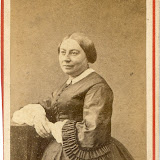Five portraits by Felix Nadar 1820 - 1910
The critics may say what they like about Zola, they cannot prevent us, my brother and myself, from being the John the Baptists of modern neurosis
Edmond and Jules Goncourt: The Goncourt Journals, Tuesday, April 23, 1878
March 21 marked the centenary of Felix Nadar’s death. 100 years is sufficient distance to ponder those questions that always niggle us when we consider a great man’s reputation. In Nadar’s case one is to wonder what the Goncourt brothers really thought of him.
Edmond and Jules Goncourt’s journals hang about the literature of Flaubert, Sand, Zola and Victor Hugo like an old aunt muttering caustic asides. Emma Bovary may have been the first ‘modern woman’ in literature but they knew her creator was an unsophisticated, syphilitic louche, which meant of course he fitted in well with Paris’s Bohemian culture and met with the brothers’ approval. Sand could be a cold lover but it was a position from which she could write about men with analytical detachment, and she did not wear men’s clothing so often as people assumed. Sarah Bernhardt looked like ‘a gaunt convalescent’. This one had flatulence, that one a diseased liver. Most of the writers, including Jules, were riddled with pox.
The brothers were not dilettantes in the sense the word was used in cultural circles at the time because they did write novels and plays but, in the way we use it now, they gave us the blueprint. Their journals are fawning and spiteful, conceited and plagued with neuroses. The Goncourts like to imagine their judgements were universal laws and whomever they deemed a genius was now vulnerable to their whims. It ought to be said that most everyone they did anoint as great is still considered so. They made dilettantism an art form in itself.
Between 1877 and 1879 Flaubert burnt a huge amount of his early correspondence. His justification was that he was doing it for the sake of posterity, but he should have realized that if future scholars wanted to learn about the author behind Madame Bovary they would have to resort to the Goncourts. With friends like that … Being artful gossips, the brothers didn’t lie, merely highlighted those details that appealed to them, which brings us to Nadar.
His portraits of Sand, Dumas, Flaubert etc perfectly complement the Goncourt journals because they also play with the idea of truth. Nadar knew how to make a sitter appear eminent. Someone who has never heard of Alphonse Daudet could study Nadar’s portrait of him and know he was an intellectual who must have had a significant reputation. He looks the part. Most of Nadar’s portraits are tightly framed; the head is all that matters. In his most famous portrait of George Sand he has drawn back. She is aloof and ironical, which is much how the brothers described her.
Nadar only earned two entries in the journals. The first was when, as a printer for the brothers, he livened up a party by inviting people in off the street. The second is really a reference to a woman Daudet ‘inherited’ from the photographer, a woman ‘drenched in absinthe’. In both cases Nadar behaved exactly as the brothers demanded one from their circle had to. (Falling in love was dull. One had to have mad affairs.) Still, he is very much a passing figure.
One reason might be he was essentially in competition with them. Like the brothers he willfully situated himself at the centre of events but this at a time when photography was usurping a role traditionally belonging to painting. A photograph took a matter of minutes to produce yet it could reveal much more about the sitter than a painting. And the brothers sweated over their words; Nadar simply pressed a shutter, or so it appeared.
The debate as to whether photography was art really only raged between critics. Painters by and large were actually open to the new medium. Turner collected daguerreotypes and Degas used photographs for his sittings. Few painters it seems described the new medium as a threat. Writers thought otherwise. It wasn’t just that Nadar could say so much with so little effort but he could also contradict the critics. The Goncourts devoted a lot of energy to degrading the people they most admired. Nadar put them on a pedestal. He was a presence at the same era as the brothers but, like blind men at a crime scene, they witnessed things differently.
The five portraits by Nadar are of unidentified French citizens. Though his portraits from Paris’ artistic milieu are his most famous, it is said that some 30 000 people sat for his camera. If all those portraits could be assembled that would create a singular record of Paris in the Second Empire. Words could not describe it.
 |
| THE PHYSIOLOGY OF TASTE |



No comments:
Post a Comment
Add comments here